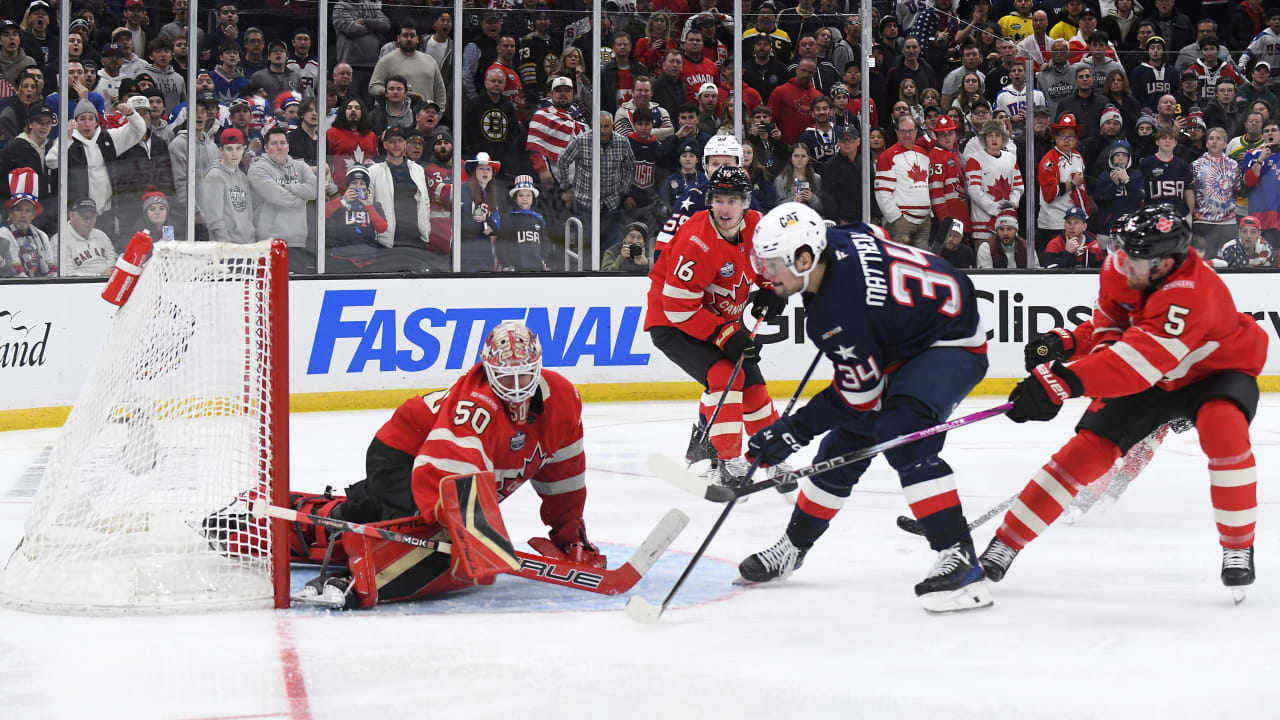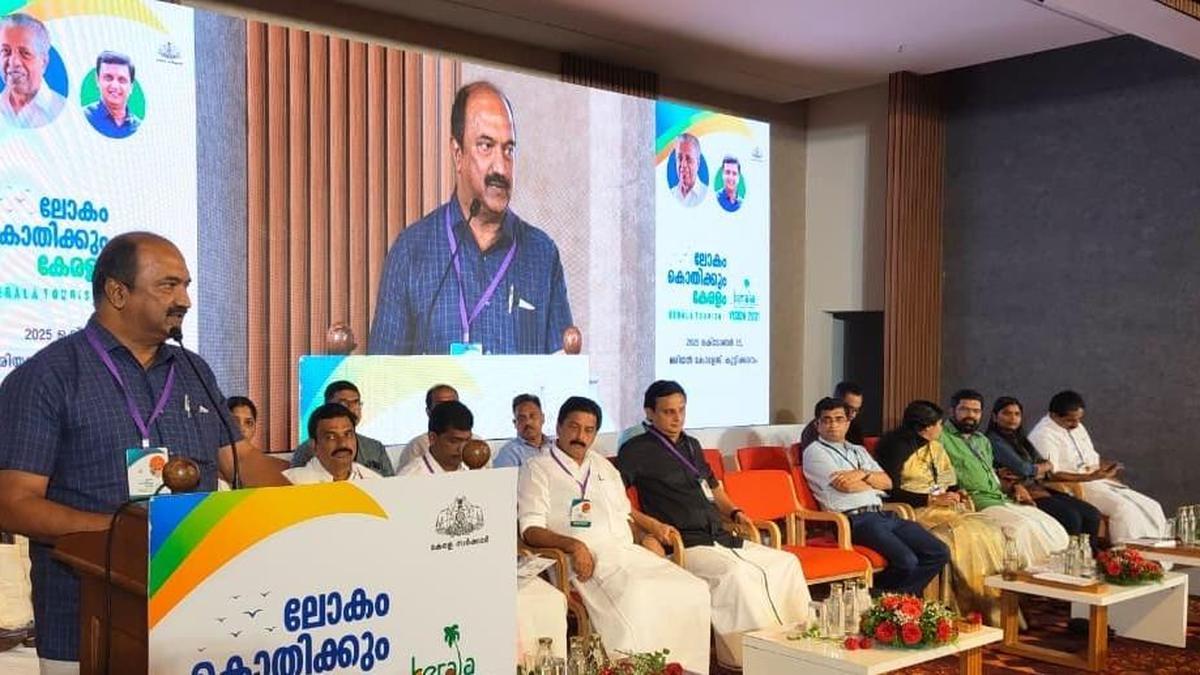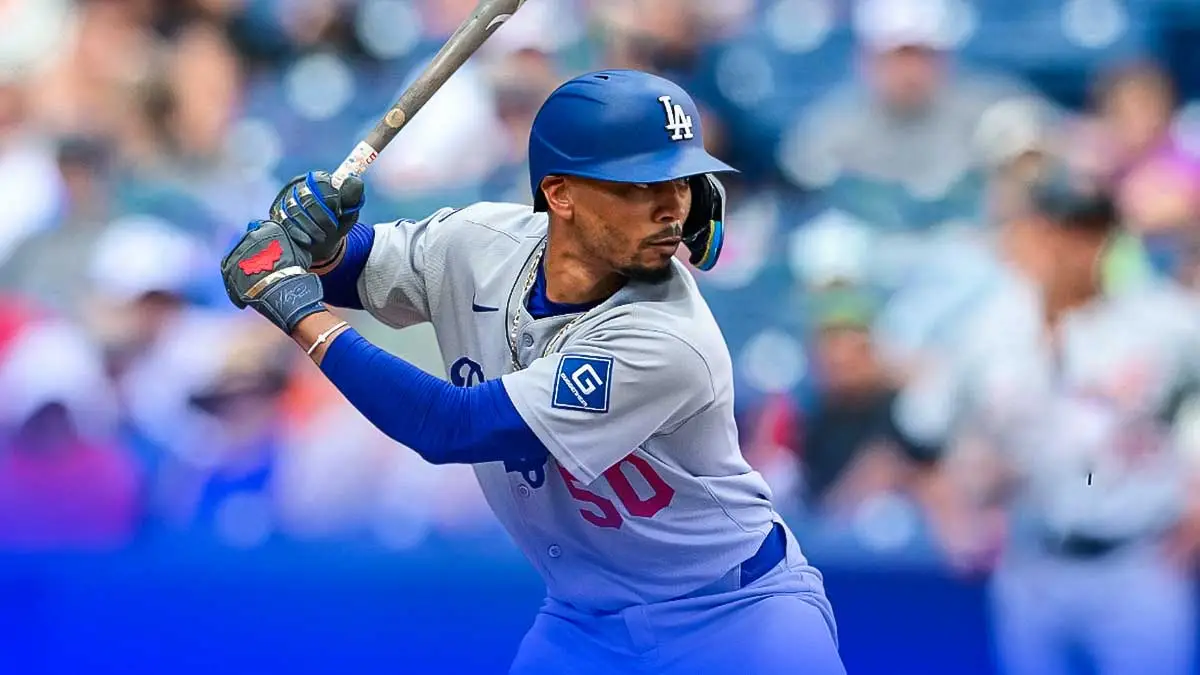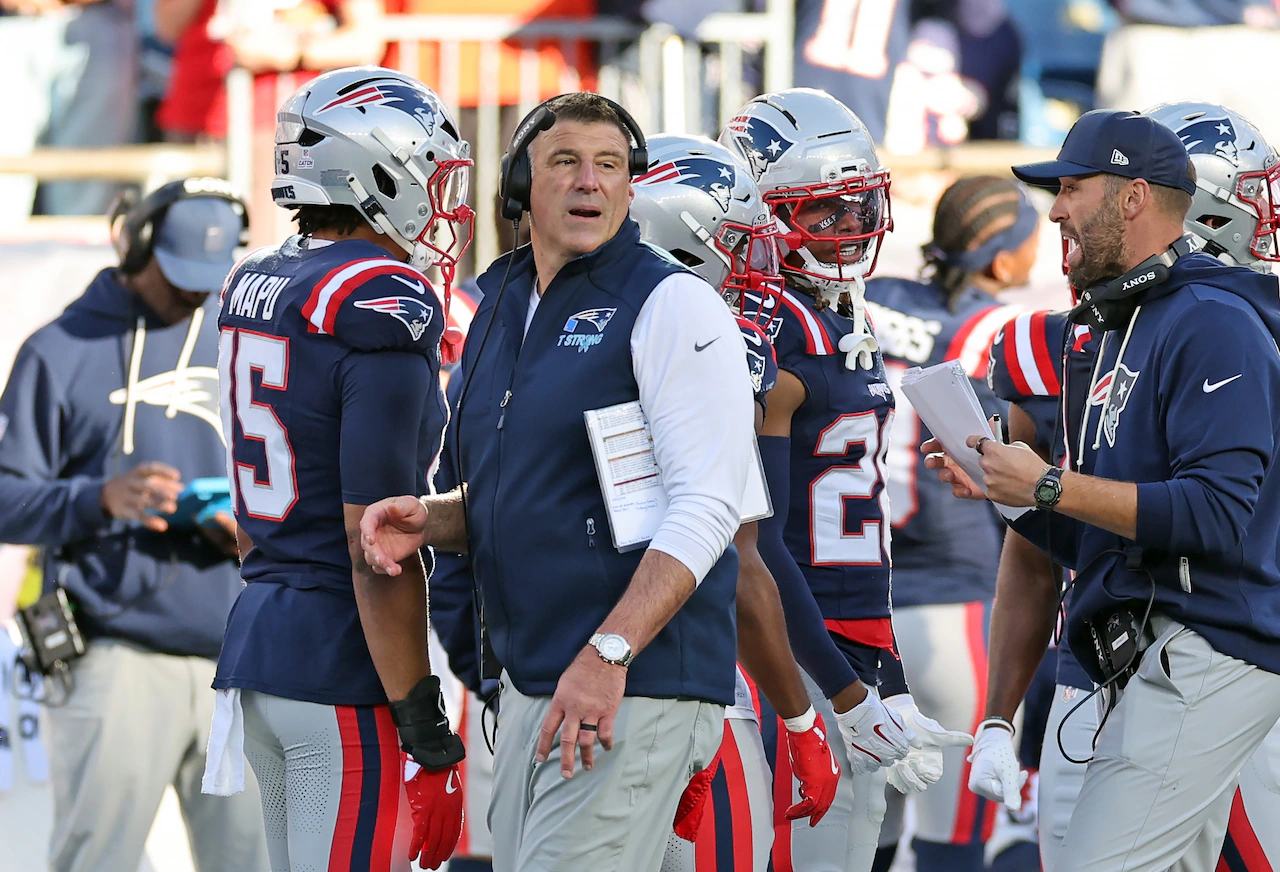Copyright NHL.com

TORONTO -- Welcome to the Olympic general managers’ roundtable. At least the North American version, anyway. Wednesday will mark the 100-day countdown to the Olympic Winter Games Milano Cortina 2026, and there are still so many issues to be addressed concerning the competition and its individual teams. Sure, each individual nation named its first six players back on June 16. Having said that, how are the remaining roster decisions shaping up? Who’s hot and who’s not through the first few weeks of the new NHL season? How have injuries affected some of the top candidates? How does the fact that the event will be played on the smaller NHL ice surface rather than the more expansive Olympic-sized dimensions of the past play into the type of players nations will be favoring? So many questions. And to help answer them, NHL.com elicited the help of Team Canada GM Doug Armstrong and Team USA GM Bill Guerin to hopefully add some clarity with Italy looming closer and closer. First off, Wednesday marks 100 days until the start of the tournament. Is it getting closer faster than you thought? Armstrong: “I would say it doesn't seem to be coming up fast. We've known for years when the Olympics were so the preparation was very meticulously planned out. And the players are defining themselves positively and negatively over the first part of the season, and they have another two months now to put their final stake in the ground, and then we'll select our team and be ready. But I think we're very comfortable in our preparation.” Guerin: “A little bit of both -- fast and slow. I guess it seems like it's forever away, but we all know that the closer we get, the faster it's going to go. So, we've got to be ready and we’ve got to be prepared and doing all our work. Part of it, it's just being ready, being prepared, being coordinated. And now we’re at the point where we can just go and watch the players and go through our process, we know what it is, and you know, that's pretty much it. And now it's just kind of sticking to the game plan and going through it.” Obviously, both your teams put on a magnificent show at the 4 Nations Face-Off, capped off with a brilliant championship game which fittingly went to overtime before Canada won 4-3. One of the most difficult parts of team construction for that event was that your final rosters had to be submitted by early December, 10 weeks before the actual competition. This time around you don’t have to submit your roster until early January, which gives you more time to gauge who’s in form. How much does that additional time help in the process of deciding which players fill out your roster? Armstrong: “I certainly understand picking the team later in advance of the event. I think this makes sense. It’s more appropriate than maybe the way we did last year, two or three months beforehand. It was far too early, in my opinion. Last year, you know, the players didn't get a chance to define themselves enough in the season. Now, by going to January 1, I think we're going to have a much more honest opinion of their play than we did last year. So, I think obviously you'd like to have the opportunity to do it up until the day before the event, to get the players playing at their peak at that time. But we understand there's a logistical part of it. I think that this is much more conducive about putting players playing their best on the team than it was for the 4 Nations.” Guerin: “To me, it's more about the health we're going to have to make tough decisions, and not everybody can make the team. So there are going to be some guys who have had good seasons or are having good feelings that don't make the team that very well could have. But it's more knowing who's going to be healthy, who's going to be hurt, and keeping everybody ready to go, because, you know, there could be last minute changes.” You bring up injuries, and there’s been some significant ones. It started with the lower-body injury suffered in training camp by Florida Panthers captain Aleksander Barkov, a huge loss for Finland. The Tkachuk brothers, Matthew (lower body) and Brady (thumb surgery) are out, although they are expected back by December and should be ready to go for you. Canada has also been hit, with two Vegas Golden Knights, goalie Adin Hill (lower body) and Mark Stone (upper body, IR) listed as week to week. Obviously injuries are factors you can’t control, but how do you handle them? And how flexible do you have to be roster-wise because of them? Guerin: “I mean, we keep an eye on it. Obviously, like those two players (Tkachuks) that you name, they're tough to replace. I mean, virtually impossible to replace because they just bring some unique things to the team. We do expect them to be ready. But look, there's nothing you can do about injuries. We're lucky enough to have a deep enough player pool that if we have to, we can dip into it. That's the important thing. But you know, that's part of it. This NHL schedule is crazy. It's so condensed. Injuries, you see injuries happening every day. It's just the timing of it.” Armstrong: “For injured guys who miss a chunk of the year early on and then come back with a small body of work to look at for this individual season, that’s when the resume comes into play. I think that if you have a deep resume of play, then it's easier to refer back to what you're going to look like when you return. If you're a young player, if your (career) resume is 15 or 20 percent complete, a long-term injury almost eliminates you directly from this event. So, I think you know what I'm trying to say there -- a top player with a strong resume is going to be able to absorb an injury more than a young player when it comes to evaluation.” OK, so let’s take the example of a veteran like Stone. Armstrong: “You take any player that's played that many years in the League, then you have to dig into the injury, and then you do your research on how quickly players come back from these types of injuries. What is the risk factor that he won't be plagued by that injury. If he won't be back up to close to 90 percent, well … I mean, I guarantee that no one’s going to be 100 percent for the tournament. But you also consider that he's got a deep resume. He's a Stanley Cup champion. He's a 4 Nations champion. He's played a long time in the League. His games don't deviate a lot; it's just where health is for certain players. And I don't want to just focus on any one player. That’s just the reality.” So, what about a younger player like the San Jose Sharks’ Macklin Celebrini? In cases like younger players like him, how much does experience matter when deciding between two players with comparable talents? Armstrong: “What you're looking for in a player as you build his resume is consistency. These are world-class athletes. Players can have massive nights. But what’s he done through five, 10, 15, 20, 50 games, and not just the one night? A young player has to build their resume through consistent play every night, whereas a veteran player’s already done that. I mean, let me stress that there is no age restriction on this event for us. But you also want to take players with the belief that as the environment changes, as the game changes, as the stakes go up, they have something to refer back to. Every player has an opportunity right now that's on our long list. Some players are moving up that list and some players are moving down that list. And that's why it's nice to have until January.” Guerin: “In our case, there’s some younger players out there that are playing really well. That comes as no surprise to us. Could they make it? Yeah, but if they don't, maybe this just isn't their Olympic team. The next one probably will be. But again, we'll see where we are when it’s time to pick. We’re still a couple months away from actually doing that. So, we'll see where everybody is.” One group of guys who have shone as candidates for the United States are the goalies. Connor Hellebuyck of the Winnipeg Jets, Jake Oettinger of the Dallas Stars and Jeremy Swayman of the Boston Bruins were your goalies at 4 Nations, and Anthony Stolarz (Toronto Maple Leafs) and Joey Daccord of the Seattle Kraken have gotten off to good starts this season. How much of a positional battle, if any, is this going to be? Guerin: “Don’t forget Thatcher Demko of the (Vancouver) Canucks either. Yeah, I mean, if you have hard decisions to make, then that means guys are playing well and you have a lot of choices, you have a lot of flexibility. So, it's a good problem to have.” On the subject of goalies, Canada brought only three to its Olympic orientation camp in Calgary in late August -- Hill, Jordan Binnington of the St. Louis Blues and Sam Montembeault of the Montreal Canadiens. Those were the three at 4 Nations. Does that mean you’ve already narrowed your list of candidates? Armstrong: “It’s probably the opposite. There's so many [candidates] on the radar, it would have been like a goalie camp. So, what we did is we called the other goaltenders [who weren’t invited] and told them that it's an orientation camp, but your participation in the Olympics is going to be based on play. Right now it’s early in the season, especially for that position. As I said, it’s a body of work. The stats are going to mean a lot more on January 1, as we narrow this down, than they do in late October.” One of the keys in this tournament is that it will be played on NHL-sized rinks. How much does that alter roster construction as opposed to past Olympics when the event was held on the larger Olympic-sized rinks? Guerin: “The big ice is a different game. It’s hockey, but it’s not hockey as we know it. You probably have to look at different things, but it is being played on NHL-sized rinks, so I'm happy about that. I remember when I played on the big ice, I’m a big guy. And it's a lot more skating. There's more patience involved. Like I said, it's a different game. Putting the puck in and chasing it is a lot more difficult. There's a lot more area out there, so you're hunting down pucks that normally would be 20 feet away, is now 35 feet away. So, it's just different.” Armstrong: “I personally think the game is still won in the trenches. If you win the offensive and defensive paint area, you're probably going to win. And so, everyone has to get there at some point. So, I think it's easier to scout this, because you're scouting what you're going to see over there. But my belief is the best players are going to be the best players, regardless of the size of the ice, because hockey sense is the No. 1 quality, and they always find a way to adapt. But it's certainly easier. Certainly there's no layer of, ‘Well, how will this transfer?’ Because there's nothing to transfer -- it's the same game.” Finally, you both have relationships with Sidney Crosby. Bill, you worked with him while you were with the Pittsburgh Penguins’ front office. Doug, he was your captain at 4 Nations, one of his many triumphs while the two of you were in events for Hockey Canada. At 38 years old, Crosby is averaging more than a point per game with 11 (six goals, five assists) in nine games. Does anything this guy does surprise you any more? Guerin: “Not surprised, no. Nothing surprises me. I've known him long enough. I've seen it before. This guy, he's always been dialed in and soldiers on. I don't care if he's 22 or 38 or whatever he is now. Not surprised.” Armstrong: “He's one of the top players ever to play the game. I do believe the most dangerous animal is a wounded animal. People weren't picking the Penguins to do much this year, and you put that type of challenge to someone like Sidney Crosby at your own peril. So, I'm not surprised he's playing at the level he's playing at because he's such a leader and a great competitor. That's part of his unbelievable leadership and his ability as a competitor. So, he's as advertised and will be as advertised in February. If you had to have a list of concerns for Hockey Canada, that would be at the bottom of the list.” Does that mean the obvious? He’ll be Canada’s captain again? Armstrong: “I don’t think we’ve officially announced it yet, so I’m not going to do it here. But I think you know the answer.”



